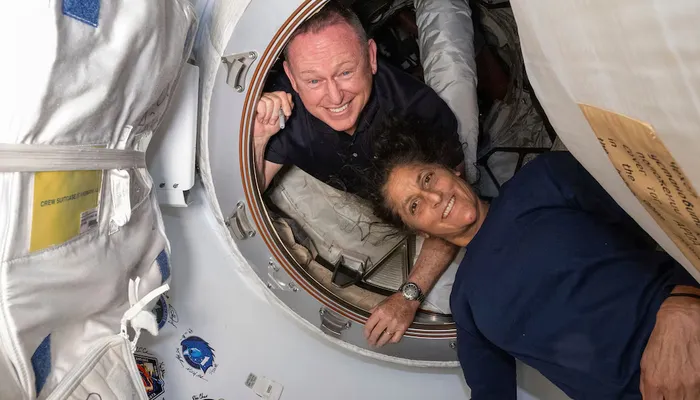After what was supposed to be just an eight-day test mission, NASA astronauts Barry "Butch" Wilmore and Sunita "Suni" Williams are finally back on Earth after spending an incredible nine months aboard the International Space Station (ISS). Their extended stay was never part of the plan, but thanks to unexpected technical issues with their original ride home, they had no choice but to stick around until NASA and SpaceX could bring them back safely.
An Unplanned, Record-Breaking Stay
Wilmore and Williams launched in June 2024 aboard Boeing’s Starliner spacecraft, which was meant to be a quick test flight. However, things took a turn when technical malfunctions, including fuel leaks and mechanical failures, made Starliner unfit for the return trip. With no immediate fix, NASA had to extend their stay indefinitely, integrating them into the ongoing ISS mission instead. What was meant to be a weeklong trip turned into one of the longest U.S. spaceflights in history.
During their unexpected time in orbit, the astronauts took on full crew responsibilities, contributing to scientific experiments, spacewalks, and essential station maintenance. Though the situation wasn’t ideal, they adapted, making the most of their extended mission while waiting for a reliable way home.

Bringing Them Back: The SpaceX Solution
Finally, NASA arranged for SpaceX’s Crew Dragon capsule, Freedom, to bring them back. The spacecraft undocked from the ISS at 1:05 a.m. ET on March 18, 2025, carrying Wilmore, Williams, and two other returning crew members—NASA astronaut Nick Hague and Russian cosmonaut Aleksandr Gorbunov, both of whom had been on the station since September.
After a smooth descent, the capsule splashed down in the Gulf of Mexico at 5:57 p.m. ET, with recovery teams quickly pulling the crew from the water for health checks and transport back to land.

Lessons from an Unexpected Mission
While this wasn’t the mission anyone planned, it turned into an invaluable experience for NASA. The extended stay provided more insight into long-duration space travel and how astronauts adapt when plans change drastically. With deep-space exploration on the horizon—including Artemis missions to the Moon and future Mars missions—learning how to handle the unexpected is more important than ever.
Wilmore and Williams now join an elite group of astronauts who have spent extended time in space, and their contributions will help shape the future of human spaceflight. While they may not have expected to stay in orbit for nearly a year, their resilience and adaptability turned a major challenge into a historic mission that will be remembered for years to come.

